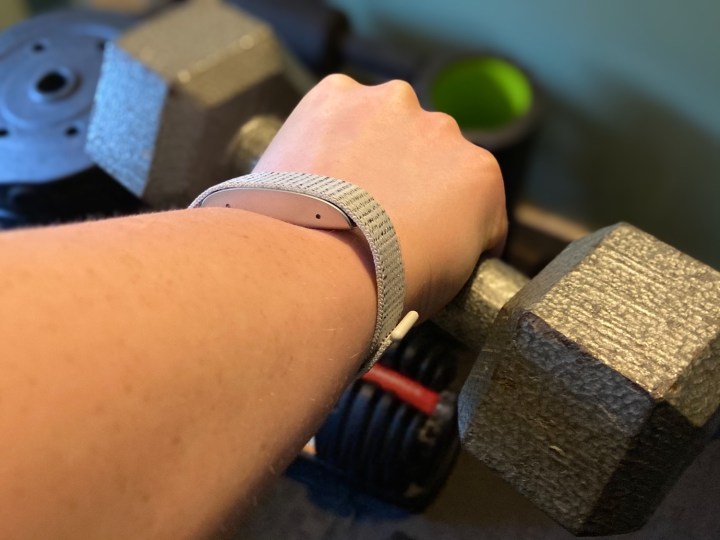
Does paying a subscription fee to own and use a piece of hardware feel reassuring? Does that monthly commitment make you feel safe, as the company has income past any original purchase, encouraging it to support and update the product so it never becomes useless?
As Amazon’s decision to end support for its Halo line of health products proves, it absolutely shouldn’t. What it should do, however, is make you seriously consider whether any subscription-based health and fitness product is a good idea at all.
Why Amazon killed Halo

On April 26, Amazon discontinued its Halo product line, which consists of the Halo Band, Halo View, and the Halo Rise. The app will stop working on August 1, when the hardware will also cease to provide any functionality. It’s not good for owners and also bad news for staff at Amazon working on the projects, as many will lose their jobs.
However, Amazon is doing something for its customers. Those who have paid the $4 per month subscription fee, or have recently purchased a Halo product, may be entitled to a refund, and it’s also providing a way to return and recycle Halo products, which are obviously now completely useless. There are also ways to download collected health data, so not everything will be lost after the shutdown date. The decision to kill Halo is speculated to be part of Amazon’s ongoing cost reduction, as it deals with changes in how people spend and global financial situations.
Halo is now a failure, and regardless of why it has happened, it’s one that the subscription model couldn’t help save. The Halo products weren’t the best of their type you could get, but Amazon’s massive reach, brand recognition, and willingness of its core customers to pay a subscription for its services should have helped mitigate at least some of that issue. But Amazon isn’t going to discontinue successful product lines that make it money — it’s going to get rid of the ones that do the opposite. The subscription fee absolutely wasn’t a lifeline for Halo and provided no protection to you as a consumer at all.
There are no promises

Amazon’s Halo isn’t the only subscription-based health and fitness product out there, but it is one of the few that has entirely closed down its operations. When a company with Amazon’s resources is forced to do that, it doesn’t bode well for other, far smaller companies with similar products. At the very least, Halo’s destruction should be a warning to anyone thinking about buying a Whoop fitness band, the Oura Ring smart ring, or even a Fitbit.
All of them require commitment. You need to commit to using them in order to get the most benefit, and you must financially commit to making full use of the sensors and software. In return, it’s not unreasonable to expect commitment from the company, whether that’s ongoing features and support … or simply for the company to still be there in a year’s time. The most recent Amazon Halo product, the Halo Rise, came out in November 2022, giving buyers a mere five months of “reassurance” at most.
Why is thinking about commitment so important? Who wants to spend all that time, money, and effort investing in a fitness product, only to find out it suddenly becomes worthless through no fault of your own? When you add a subscription into the mix, and a product that then has no ongoing use, it’s even more galling. If you’ve spent the last years with a Halo tracker, you’re now forced to start again, but not voluntarily. I wonder how many Halo owners will go on to choose another subscription-based alternative.
Commitment works both ways
It’s time to remember commitment is a two-way street. We’re committing to use and pay monthly or annually for a product, and in return for that financial support and data, it’d be nice for the company to continue existing and regularly deliver new features. People already want and rightly expect value, and now we should be extra mindful about putting additional emphasis on commitment too. If you don’t see it, then it’s probably better to buy upfront, and one time only, for your next piece of health tech.
Obviously, businesses can’t see into the future, and any making sweeping commitments about the long-term would not only be empty promises — but also pretty reckless. Instead of accepting this, think about whether that company would be able to match Amazon’s promise of refunds and further support should it decide to not support a product any longer for some reason. It’s obviously not easy to do, but another aspect of Halo’s closure has highlighted the downsides of tech subscription models.
Subscription packages of all types aren’t exactly getting the best press at the moment; just look at what’s happening at Twitter for evidence, and the end of Halo isn’t going to help. The death of Amazon Halo should be another warning sign we should be extremely wary about paying a subscription for a health and fitness tracker. Because, unfortunately, we’ve no idea what the future holds.
Editors’ Recommendations





